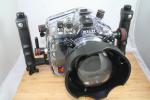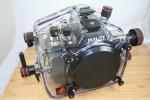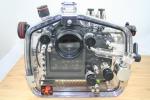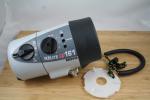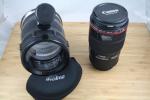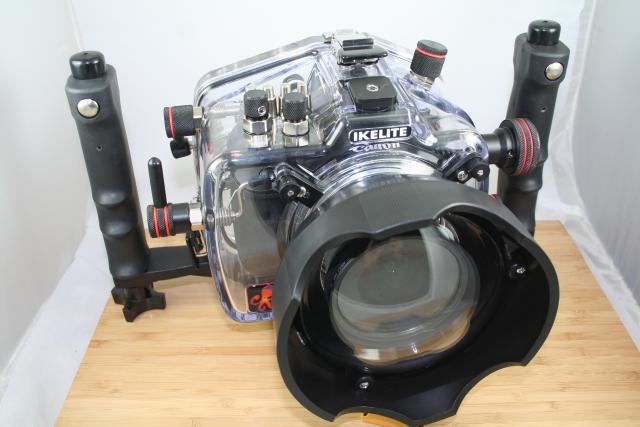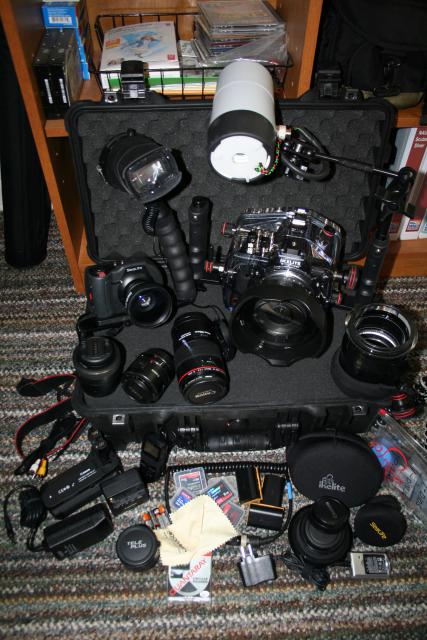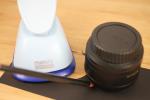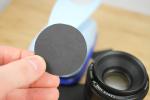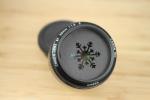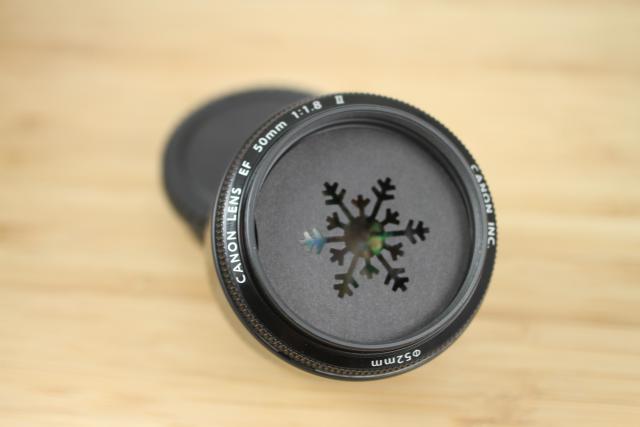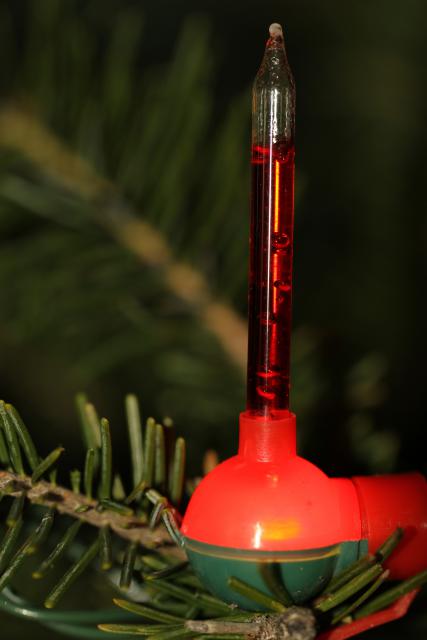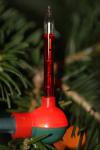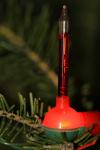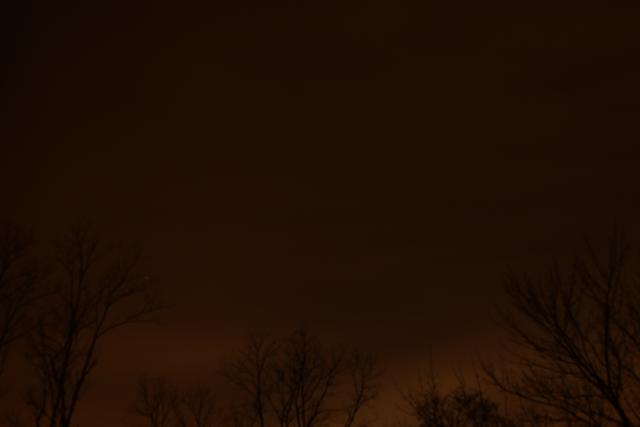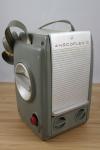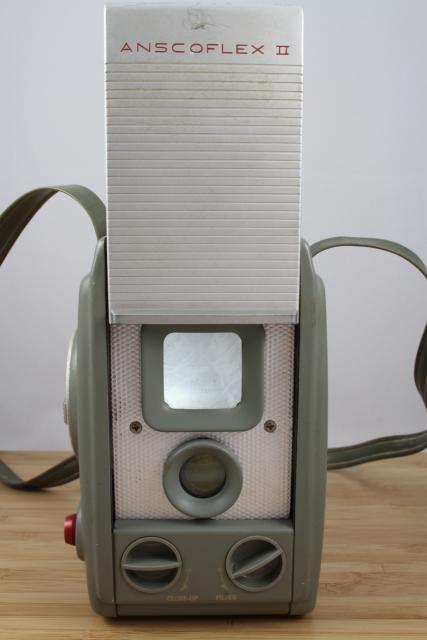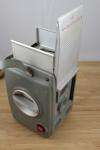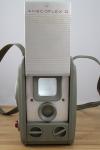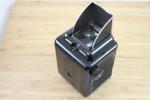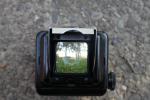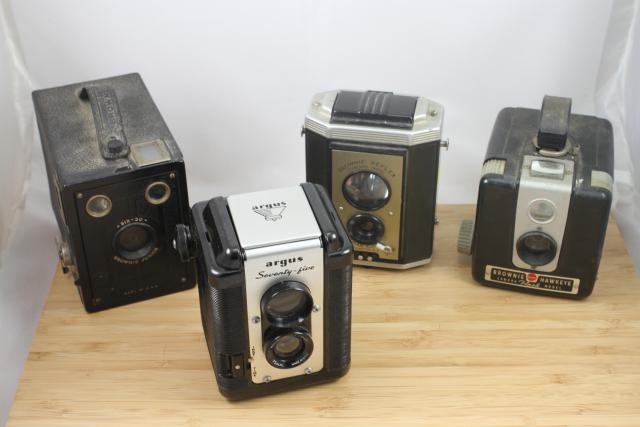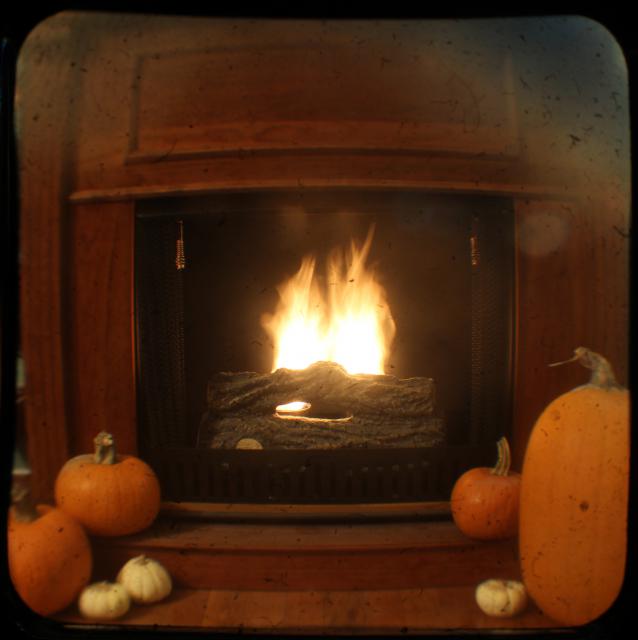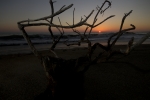gear review
Sensor Cleaning
ktuli — Wed, 08/08/2012 - 21:11
OK - this will be a boring post for most folks, but what the heck...
As you may have noticed in many of the super-macro shots I've shared recently, I have some dirt spots on my sensor on my 7D. Sometimes I will fix them in Photoshop by simply selecting them and doing a content-aware fill on them - it works like a charm almost every time. However, the 7D has about 17 or more spots, and fixing each of them every time is time consuming and kind of annoying.
So I finally broke down and bought a sensor cleaning kit. I decided on the Visible Dust kit. It comes with an LED illuminated sensor loupe that allows you to look closely at your sensor to see exactly what the problem is, a brush type cleaner, swabs for wet cleaning of both the sensor and the focusing screen, and of course the cleaning liquid for wet cleaning.
There are plenty of great videos out there for how to clean your camera, so I'm not going to try and bore you with typing out all the instructions, but I will show some of the results...
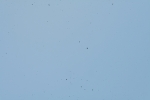 Camera 1: Before |
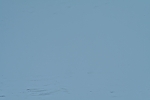 Camera 1: After Dry Cleaning |
 Camera 1: After Wet Cleaning |
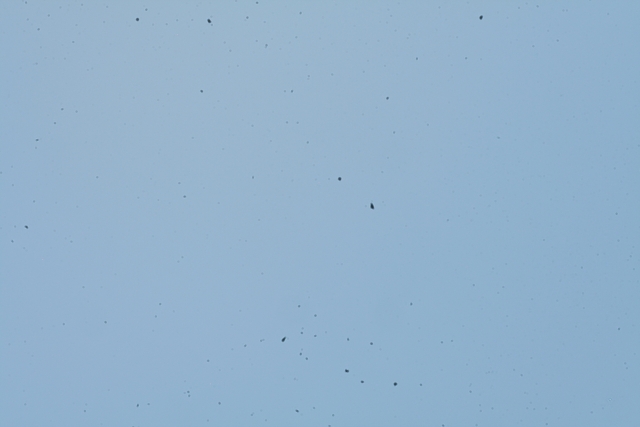 |
||
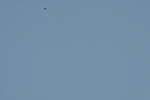 Camera 2: Before |
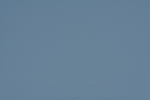 Camera 2: After Dry Cleaning |
 Camera 2: After Wet Cleaning |
A couple of things to point out here. First, for the first two test shots for both cameras, I used the sky, but by the time I was done with the cleaning, it had gotten dark enough that that wasn't a useful thing to shoot, so I just shot a piece of paper instead - the difference in yellow color comes from different color temperature settings on the cameras. Second, you will notice on the 'After Dry Cleaning' shots, there is a lot of smeared lines on the sensor - apparently I misused the cleaning brush and smeared lubricant onto the sensor. I don't necessarily think this is a problem with the product so much as misuse on my part. I will have to try again and see if I continue to have that problem. However, as you can see, the wet cleaning worked wonders on both sensors - the one still has a few tiny spots left on it, but compared to the 'Before' it is like night and day!
Oh, and even though I said I wouldn't bore you with the details, here is a quick rundown of what I did for the cleaning process:
- Take test shot (smallest aperture possible, defocused, semi-long exposure, move camera during exposure, aimed at a relatively uniform bright surface - ie: the sky)
- Use blower bulb to dislodge and loose particles
- Use camera's sensor cleaning mode to lock up the mirror
- Use LED illuminated sensor loupe to inspect the sensor
- Drop the camera's mirror back into place
- Use Actic Butterfly brush to dislodge additional particles from the focus screen and mirror
- Use camera's sensor cleaning mode to lock up the mirror
- Use Arctic Butterfly brush on sensor
- Use blower bulb one more time
- Take another test shot
- Use Focus Screen Swab and cleaning solution to clean the focus screen
- Use camera's sensor cleaning mode to lock up the mirror
- Use Sensor Cleaning Swab and cleaning solution to clean the sensor
- Take a final test shot
All in all, this ended up being not too bad. I was a bit nervous when I noticed the smears after the dry cleaning, but the wet cleaning was much simpler and easier than I thought. I was worried I would damage the sensor, but it seems that as long as you are prepared and cautious, it really isn't such a huge risk.
Now I just need to get around to doing the same on the 7D...
- Bill
Ikelite Toys
ktuli — Mon, 01/10/2011 - 21:24
Ok - as promised, I'll finally get to a quick (probably not so much if history is any indication) discussion of the Ikelite equipment I recently purchases so that I can take my 7D diving with me.
In simple terms, the equipment includes a housing, a couple lens ports, a strobe and arm kits, and a waterproof hard-case to carry it all.
 Ikelite systems are clear acrylic housings that combine with modular lens ports that are able to be swapped out based on what lens you are planning on using for the dive. The nice feature that Ikelite provides is that full access is given to (almost) every button, switch, knob... In my case, the only buttons not accessible are a 'joystick' style selector button whose functionality can be produced with other buttons, and the pop-up flash button which is not available (nor would it be useful). Looking at the unit, it is rather impressive to see how they managed to maintain some of the button access, and since the housing is clear, you are able to see how the knobs and buttons actually work. (I really love that logo too!)
Ikelite systems are clear acrylic housings that combine with modular lens ports that are able to be swapped out based on what lens you are planning on using for the dive. The nice feature that Ikelite provides is that full access is given to (almost) every button, switch, knob... In my case, the only buttons not accessible are a 'joystick' style selector button whose functionality can be produced with other buttons, and the pop-up flash button which is not available (nor would it be useful). Looking at the unit, it is rather impressive to see how they managed to maintain some of the button access, and since the housing is clear, you are able to see how the knobs and buttons actually work. (I really love that logo too!)
|
|
|
|
|
|
|
|
||||
First off, I'll apologize because some of those photos are less than stellar - I was just firing them off quickly, and kind of ignored some details.
Anyway, you can see by the above shots the housing with the handle tray and my wide angle lens port attached, the housing with no ports attached, the back of the housing (showing a lot of the buttons), the strobe unit (without the flexible arm), and the 100mm macro lens and lens port.
Between the two ports I purchased, I am able to use my new Canon EF 100mm f/2.8L Macro IS USM in a flat port that is specifically designed for that lens. The port has a large knob on it which is used for manual focusing, and since the lens has full-time-manual focusing the knob is nice to have. Additionally, I've found that it also fits my Tokina AT-X M35 Pro DX AF 35mm f/2.8 Macro lens with my 2x tele-converter installed. The wide angle dome port fits a number of lenses including that same Tokina 35mm Macro, my Sigma 10-20mm f/4-5.6 EX DC HSM, Canon EF-S 18-55mm f/3.5-5.6 II, Canon EF 50mm f/1.8 II, and maybe some others, but those are the ones I'll be taking with me on the trip.
The strobe is both a flash and a movie light, so I will be able to (and definitely plan to) use it to make a video or two during a night dive. The flexible arm (which you can sort of see in the shot below) allows me to position the light right where I need it. It also comes with a diffuser to allow me to spread the light a little wider for wide angle shots, or soften light for the macro work.
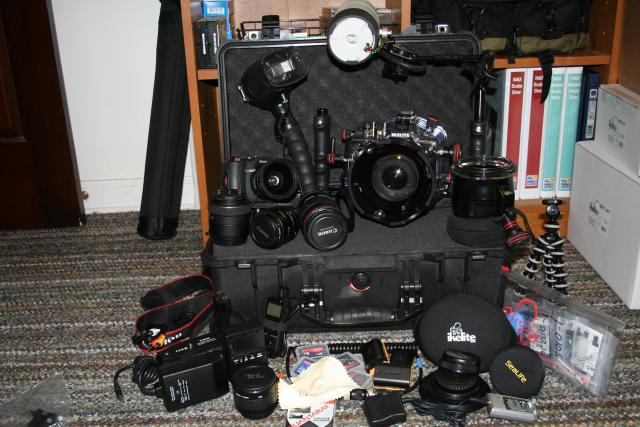
And here is another shot of the mound of stuff on top of the Pelican case. I think I have almost everything packed into the case except for a couple items I'll have to carry separately or in my checked-luggage.
Here's hoping the new equipment really does help me to bring back better images, but you'll have to wait a few more weeks to find out if that is true or not.
- Bill
Packing Dilemma
ktuli — Thu, 01/06/2011 - 21:56
What you see buried under this mountain of gear is a Pelican 1510 Hardcase. It is the largest possible size to be counted as a carry-on bag for flights. And somehow, I need to figure out how to get all that gear to fit inside that case....
I'll get into the details in the coming days, but right now I have a close 1-1 Pens and Canadians hockey game to finish watching.
- Bill
Merry Christmas (part 2): Shaped Bokeh Tutorial
ktuli — Fri, 12/24/2010 - 13:01
I debated putting this off another day or two, but I guess like the Grinch, I had a change of heart and decided to stick with my promise from yesterday and tell everyone how to do this awesome little trick today.
Again, this one is fairly easy, but does require more preparation than the other two techniques I showcased yesterday (but not too much).
|
|
|
|
|
|
|
|||
You will need the following items: black heavy cardstock, craft punches or a craft knife, a fast lens (f/1.8 would be really great - so hopefully you bought that cheap 50mm f/1.8 lens). And here are the instructions:
- Either trace the outside edge of the front of your lens or (as I did) measure the inside diameter of front of the lens (be sure to use the front of the lens, not the back where it attaches to your camera)
- If you have access to one, use a circle punch of the correct size or cut the circle out with scissors - this will be your blank
- Again, if you have access to various shaped craft punches, simply use them to punch out a shape in your blank. If you don't have one, or want to get more creative, draw a shape on your blank, then cut it out using a craft knife (like an X-Acto knife)
- If you traced the lens, you will attach the shape punched disc to the end of your lens using some tape. If you measured and cut based on the inside diameter, you can place the disc inside the end of the lens (mine seems to stay simply by pressure and getting stuck in the filter threads)
- Repeat the steps as many times as you want for as many shapes as you want to make!
- Then simply fire away - for my shots, I was just defocusing the lens manually and shooting
If the above steps seem a bit daunting, or if you just prefer buying things, there is a kit from Lens Baby that comes with pre-cut shapes as well as extra blanks. Luckily for me, Anya does a ton of crafting, so I have access to all those punches. Either way, you're well on your way to making fun photos like these:
|
|
|||
|
|
|
|
|
Technical Data: Canon EOS 7D, Canon EF 50mm f/1.8 II, 1/5th, 1/8th, 1/12th, 1/12th sec respectively at f/1.8, ISO 200. No Post Production.
Well, I hope you enjoyed the tutorial - my Christmas gift to you. Hopefully it inspired you to give this fun technique a try. Sorry that today's set seem a little blurry - I didn't have time to reshoot them.
Tune in again soon... next up is the Christmas TTV!
- Bill
Canon EF 100mm f/2.8L Macro IS USM (part 1)
ktuli — Wed, 12/22/2010 - 21:57
This won't be a comprehensive review by any means, but I figured I would try and get a little something pulled together. Plus I have been thinking about trying this photo for a little while now (basically since we decorated our Christmas tree this year).
 This is my newest lens - the Canon EF 100mm f/2.8L Macro IS USM. Like a previous lens review, let's go through quickly what the letters mean...
This is my newest lens - the Canon EF 100mm f/2.8L Macro IS USM. Like a previous lens review, let's go through quickly what the letters mean...
EF - Stands for Electro Focus, and you can read more here
100mm - This is the focal length obviously, this will fit nicely between my Tamron 180mm and Tokina 35mm macro lenses
f/2.8 - The maximum aperture - at 2.8, this is considered pretty "fast" glass due to the amount of light such a large aperture will allow into the camera, producing faster shutter speeds
L - I've heard multiple definitions for this single letter - the top runners are probably "low dispersion" and "luxury". Canon used to have a page dedicated to the line, but I can't seem to find it. Regardless, this is Canon's professional grade line of lenses. Identified by the red ring at the end of the lens barrel.
Macro - Many lenses get the "macro" label slapped on them, but unless they produce 1:1 magnification, I don't consider them true macro lenses (some people say 1:2 is close enough). What this means is that at 1:1 magnification, the subject is recorded at life-size on the image sensor.
IS - Image Stabilization, we'll discuss that a tiny bit more further down.
USM - Ultra Sonic Motor. This is the auto-focus motor and produces a much faster focusing, while staying almost completely silent. The other nice feature of a USM lens is that it allows for full time manual focusing - meaning you can make manual focusing adjustments even while in auto-focus mode.
I've had this lens on my wishlist for quite some time, and I finally pulled the trigger on it to use with photographing all of the macro life on the reefs in Wakatobi. So I pretended that these bubbler Christmas lights were some small reef invert and went about shooting. I also wanted to get a shot of these lights with the bubbles frozen in motion.
|
|
|
|
|
|
I know that's a fairly random set of changes, and none of them get into too much detail of showing the abilities of this lens. The clarity is very nice on every one of those shots - a testament to the quality glass used, but you only notice that on the fullsize versions.
The IS and non-IS versions are surprisingly not that far off (middle and bottom thumbnails on the right). This is probably due to some patient hand-holding techniques. Usually I'm happy if I can get 1/8th of a second with a handheld shot, and those are at 1/3rd! So perhaps I'll have to try that exercise again sometime.
I ended up using the pop-up flash and faster shutter speeds on several of these shots to help get those bubbles frozen in motion (instead of the blur from the longer shutter speeds), and really wish I could have diffused the light from the flash better to prevent that harsh glare on the glass of the light.
I promise I'll do a more thorough review of this lens in the future (probably not until after the dive trip though), but for now, I'm highly impressed with this lens.
Stay tuned as I have some more Christmas themed photos coming up to close out the week and get us into the holiday!
- Bill
BG-E7 Battery Grip & Satechi TR-A Timer Remote Control
ktuli — Tue, 12/21/2010 - 21:07
Alright, as promised, I will get to some of the product reviews I've mentioned a few times already. Sorry though, I'm not ready to do my review of the Canon EF 100mm f/2.8L Macro IS USM just yet. So instead, we'll look at the Canon BG-E7 Battery Grip and the Satechi TR-A Timer Remote Control.
 This is actually a little funny... on one hand, I was nervous and apprehensive about buying a non-Canon battery grip (there are plenty of third party options that sell for much cheaper), yet I did end up with a non-Canon timer remote. In both cases, the third party products were roughly half the price, but there was just something about the battery grip, with it being so integrally involved in the power system of the camera that I just couldn't bring myself to trust a non-Canon product. This is something you'll have to debate for yourself I guess.
This is actually a little funny... on one hand, I was nervous and apprehensive about buying a non-Canon battery grip (there are plenty of third party options that sell for much cheaper), yet I did end up with a non-Canon timer remote. In both cases, the third party products were roughly half the price, but there was just something about the battery grip, with it being so integrally involved in the power system of the camera that I just couldn't bring myself to trust a non-Canon product. This is something you'll have to debate for yourself I guess.
Canon BG-E7 Pros: Obviously, you buy this if you want to double your shooting time, and this obviously does that with no question. The connection to the camera is very snug and sturdy (I've seen others - usually third party products - that are a little wobbly), and all functionality is maintained at both shutter triggers with the additional scroll wheel and other buttons. Additionally, once I recover a little camera budget, I'll be able to go pick up the Canon Hand Strap E1 which only works with the battery grip attached.
Canon BG-E7 Cons: Aside from the price, my biggest gripe with this grip is the fact that the button feels different than the main shutter button. Why not make them feel identical in your hand? My hand has gotten used to 7D's button placement, why would a Canon product not replicate that identically? Also, like other third party grips, it has a separate on/off switch to activate/deactivate the additional buttons - why not use the camera's orientation to do that? The camera can automatically rotate my photos based on camera orientation, why not this?
The grip adds a good deal of weight to the camera too, but I'm not going to complain about that - I knew it would before buying it. And except for the feel in my hand, the cons are pretty minor - if you have a need for a longer battery life, it is worth it (just make sure you have plenty of battery packs to fill it - it doesn't come with any extras).
The photo above was from my attempt to capture the recent total lunar eclipse for a timelapse video. Unfortunately, I was unable to properly predict where the moon's path would take it, so the best I got was some orange clouds. However, the exercise was worthwhile to practice the use of anintervalometer.
 I purchased this Satechi TR-A Timer Remote Control back in May, and haven't really done much to use it to its fullest potential. Before this, I had just been using it as a remote shutter release (very very handy for detailed macro and long exposure work).
I purchased this Satechi TR-A Timer Remote Control back in May, and haven't really done much to use it to its fullest potential. Before this, I had just been using it as a remote shutter release (very very handy for detailed macro and long exposure work).
But this remote also has the timer function that is very powerful. I can set any combination of the following:
o Delay before starting exposures
o Bulb exposure time (useful for exposures over 30 seconds)
o Interval between exposures
o Number of exposures (including infinity or basically until the battery runs out on something)
o Audible countdown beep warning (for the last 3 seconds before exposure)
So for example, last night, I set the timer around 10:30PM. I set a 1.5 hour delay at the beginning so my exposures wouldn't start till midnight. Then I had the remote do 30 second exposures every 2 minutes, set to infinity so I manually stopped the cycle in the morning when I woke up. Had I properly pointed my camera, I would have had 210 exposures of the night's lunar eclipse. Instead, I got 210 exposures of clouds.
Satechi TR-A Pros: Obviously, the price is much nicer than Canon's TC-80N3 ($60 versus $150), and from what I have read it does every feature that the Canon trigger does. The interface is simple to use, and as long as you slow down and think about what you actually want to do, is very easy to setup (I read multiple reviews of people getting confused with the setup, but I think they just were getting confused and didn't understand the manual's instructions). Lastly, the trigger works perfectly as a wired remote without needing to have batteries installed - great for saving battery life and not keeping the batteries installed in the unit!
Satechi TR-A Cons: Honestly, I read every single review of this product I could before committing to buying it, and I can only agree with a couple of the cons people found with this product. First, the backlight really does turn off far too quickly. It would be nice if the backlight had a lock-on function to make programming the remote in the dark much easier. Also, there is a red light that flashes while the camera is making an exposure - honestly, I see two things wrong with this: (1) it uses battery life and (2) depending on where you set the remote, could get picked up in your exposure. I like the option to have the flashing light, but give me the option to turn it off too.
All in all, again, we're looking at very minor cons that are far outweighed by the pros of these products. Both products are items that you might normally overlook as valuable to your photography, but once you have them, I think you really see the value in them.
I can't stress enough the value of the remote shutter release - and I'll argue the debate with anyone who wants to claim that a timer delay function on the camera is good enough. I know the battery grip is more of a luxury item, but a remote shutter release really should be part of every serious photographer's kit (whether it is a intervalometer model or not).
Well, I hope you enjoyed the double product review today, I know it got a little long, but they linked together for this recent project (even if I didn't get my eclipse timelapse like I wanted!) so I thought it worked well to review both together.
Stay tuned. I still owe you folks the lens review, and I know folks are waiting for the Christmas TTV (you didn't think I'd pass up a chance to get some more TTV in, did you?).
- Bill
Another New Camera!
ktuli — Thu, 12/16/2010 - 22:08
Well, I'm sure you were expecting a post about brand new equipment... I recently got a new lens, battery grip, and more memory cards, but we're not going to talk about any of that today.
Instead we'll talk about a Christmas present I didn't buy for myself. Let me preface that with a little explanation. Anya and I made a decision when we got married that we would do gifts every day from our anniversary (on 12/15) through to Christmas. So today was day two of our gifts, and Anya surprised me with this little beauty!
|
|
||
That's an Anscoflex II TLR camera that I will be able to use for more TTV Photography (see more: 1, 2, 3, 4, 5, 6, 7, 8). So it gets to go along with my other vintage cameras.
The Anscoflex started production in 1954, but I'm having a hard time finding more details about it, but I am looking forward to building a new contraption for it and getting some TTV shots with it. I like that it came with the case, and I really love the super large viewfinder and the sliding cover for it, but I can't stand the vinyl neck-strap, so that'll be coming off. After unwrapping it, I instantly started playing with the knobs and shutter, and fired off a couple frames before realizing that there was still film inside! So I might have taken a couple shots of our Christmas tree, but either way I'll have to go get the film developed (along with the roll from one of the other TLR's we've found).
This was a really wonderful gift, but I promise I'll try to get to the new equipment reviews soon.
- Bill
What is TTV? And how do I do it?
ktuli — Wed, 10/27/2010 - 20:37
Ok, so I've been showing off this TTV photography, but what does that mean?
TTV literally means Through The Viewfinder as the technique is done by using one camera to take a photograph through the viewfinder of another camera. Theoretically, you could use this technique with any two cameras, but in reality, if you tried it with two modern cameras with modern viewfinders, you'd probably be rather frustrated (nor would you get the nice vintage look that most TTV photographers are going for).
 At which point vintage TLR cameras come into play. TLR stands for Twin Lens Reflex (as opposed to modern SLRs - Single Lens Reflex). TLRs - as the name implies - used twin lenses in their construction; one for the viewfinder, and one for the exposure. The TLRs used in TTV photography were waist-level cameras that were designed to be held at waist level and the photographer looked down through a viewfinder at the top of the camera, and with the assistance of a mirror, through the front of the camera's upper lens. Below, you can see my Argus Seventy-Five TLR with the viewfinder cover open, and then a shot looking down through the viewfinder from a distance.
At which point vintage TLR cameras come into play. TLR stands for Twin Lens Reflex (as opposed to modern SLRs - Single Lens Reflex). TLRs - as the name implies - used twin lenses in their construction; one for the viewfinder, and one for the exposure. The TLRs used in TTV photography were waist-level cameras that were designed to be held at waist level and the photographer looked down through a viewfinder at the top of the camera, and with the assistance of a mirror, through the front of the camera's upper lens. Below, you can see my Argus Seventy-Five TLR with the viewfinder cover open, and then a shot looking down through the viewfinder from a distance.
So, to create TTV photographs, you simply line up your modern camera (you don't need an SLR, but of course I recommend one) to shoot down through the viewfinder of the vintage TLR camera. Doing this hand-held is difficult - near impossible. Additionally, you want to eliminate any additional light sources except for what is coming through the TLR's viewfinder so that you get the best possible exposure of your TTV photograph. To do this, you need to build a contraption - yes, as I mentioned before, that is what TTV photographers call the cardboard frame used to merge the two cameras for easier setup of the shot.
Your contraption will differ based one several factors - first, depending on what TLR camera you find (more on that in a bit), and the lens you are going to use on your SLR camera (you can use a compact camera, but from what I have read, it is more difficult). I'll discuss those points in a little bit, but for now, we'll look at the general construction of the contraption.
 First, you need to measure the outside dimensions of your TLR to build a frame (I used cardboard, but other materials will work if you're looking for something more robust) that will wrap around the outside of the TLR.
First, you need to measure the outside dimensions of your TLR to build a frame (I used cardboard, but other materials will work if you're looking for something more robust) that will wrap around the outside of the TLR.
Next, you need to measure the height that your contraptions needs to be. This is where the lens you select comes into play. I highly recommend a macro lens if you have one. The reason for this is you want a lens that can focus on the viewfinder of the TLR as closely as possible. You can start out by looking up the specifications of your lens to see what the manufacturer lists the minimum focusing distance as, or you can (and probably should to be sure) measure it yourself. To make the measurement yourself, place your TLR on a table and use your camera to look down through the viewfinder. You want to accomplish two things here - fill as much of your SLR's frame with the viewfinder of the TLR - if you can get it to almost touch the top and bottom of the frame, you're set! (but remember to not overfill and cut off those nice rounded corners of the viewfinder). Once you've got that worked out, measure the distance either from the front of your lens or front of your camera to the table (it helps to have a second person there to do the measuring). The reason I recommend a macro lens is because they generally have a small minimum focusing distance and helps to keep your contraption smaller and more manageable. I used my Tokina 35mm macro since its minimum focusing distance is only 5.5 inches.
The instructions from my book missed a couple suggestions that I found helped. First, give yourself an extra flap to overlap to close the contraption around your TLR - this helps to block light leaking in through a corner. Second, I built my contraption to go all the way to the bottom of the TLR which means when I measured the minimum focusing distance above, I could just measure to the table and not worry about trying to measure to the viewfinder and then add an amount to slide over the TLR. Also, I found that (at least with my Argus) I was able to simply press it against the cardboard to mark where I needed to cut out for the lenses and the film advance knob on the side of the lens.
 Once you've got that all figured out, the last thing you need to figure out is a top flap to cover the top, which you'll cut a circle opening in for your lens to point through. Measure out your contraption on carboard, cut it out, use a craft knife to cut out the openings for the lenses and any knobs that need to push through (I removed the knob and then replaced it after sliding the cardboard into place - see photo to the right), and score the lines to fold along the corners.
Once you've got that all figured out, the last thing you need to figure out is a top flap to cover the top, which you'll cut a circle opening in for your lens to point through. Measure out your contraption on carboard, cut it out, use a craft knife to cut out the openings for the lenses and any knobs that need to push through (I removed the knob and then replaced it after sliding the cardboard into place - see photo to the right), and score the lines to fold along the corners.
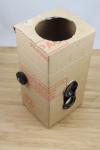 At this point, you can put your contraption on your TLR and try it out. If you're lucky or good, you'll be ready to go... if you're like me, you'll start working on your second contraption because you messed something up on the first one. ;)
At this point, you can put your contraption on your TLR and try it out. If you're lucky or good, you'll be ready to go... if you're like me, you'll start working on your second contraption because you messed something up on the first one. ;)
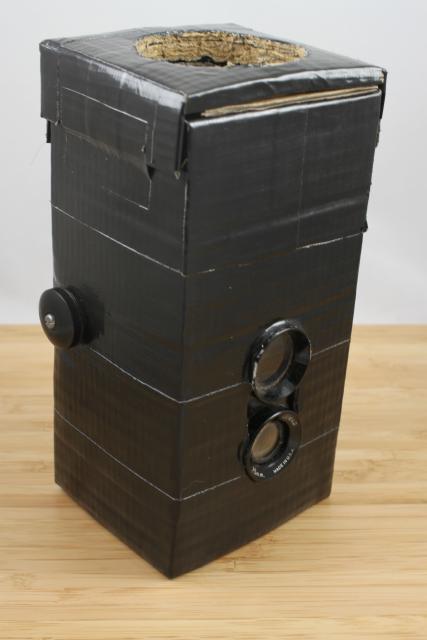 Finally, if you're like me, you'll want to break out the black duct tape and cover your whole contraption in the black tape. This actually does more than just make the contraption look a lot nicer. It helps to add a bit more stability and strength to the cardboard, and helps to block any light from leaking through and making your exposure more difficult. But it really does make it look a lot nicer!
Finally, if you're like me, you'll want to break out the black duct tape and cover your whole contraption in the black tape. This actually does more than just make the contraption look a lot nicer. It helps to add a bit more stability and strength to the cardboard, and helps to block any light from leaking through and making your exposure more difficult. But it really does make it look a lot nicer!
Geez - this really has turned into one long post - I apologize for that, but I really wanted to to be as thorough as possible. Hopefully this has helped and you feel you could use this to get started with TTV photography.
Before I wrap this up, though, I do want to provide a couple more bits of information that will probably be helpful. First, don't spend a lot on your TLR - you can usually find these at flea markets for very little. I went to a single flea market and came home with four different TLRs for a mere $20 total (granted only two of them will work for TTV, but still). Also, since you don't use the exposure lens, the camera doesn't even need to work, so don't spend extra money just to get a camera that is labeled to work - get one that "doesn't work" just to save a few bucks... all you care about is that the viewfinder works. Which is the last point about the TLR - don't clean the camera! Leave that dust and dirt and scratches on the lens and viewfinder - it adds to the vintage look of the photos.
Also, when you are set to shoot, try the following on your DSLR. Use Liveview if you have it - it makes it much easier to compose the shot and see what is in your frame. If you do use Liveview, be sure to take extra batteries as Liveview will chew through batteries quickly. I'd also recommend turning up your auto-power off setting so that your Liveview doesn't turn off right as you're about set to take the photo. Next, if your camera has it, turn off the auto-rotate feature. Since your camera will be pointing down, the sensor that measures what orientation you're in is easily confused, and simply turning this feature off eliminates the photos being rotated when you didn't want them to be. And lastly, I was finding that I needed to "under" expose my shots. This is probably because I was using evaluative metering mode, perhaps try partial or spot metering instead. But if not, I found I was consistently "under" exposing by up to 2 full stops. This helped to give more of that vintage feel, but also made for more reasonable shutter speeds since the TTV generally makes for less light coming through to begin with - I spent much of the day at 1/10th of a second shutter speed.
Again - sorry that this was a very long post. There was just so much information here, and I sometimes get a little wordy. To make it up to you, this does mean that the next couple days worth of posts will be focused on just the photos without having to spend time discussing the details here.
I do hope the details helped though, and if anything at all is confusing, please don't hesitate to post a question in the comments and I'll do my best to explain better!
Tune in tomorrow for more fruits of these efforts.
- Bill
Intro to TTV
ktuli — Sun, 10/24/2010 - 21:57
I know I've been a bit secretive on some projects I have in the works, but today I'm really excited to start discussing one of those projects.
So let me back up a little bit. A few weeks ago, I was at a Barnes & Noble and saw a book titled 50 Photo Projects. I came home, went on Amazon, and found it and a couple other books - including Camera Creative.
In the latter book, the author - Chris Gatcum - discusses 52 different interesting photography projects. Number 17 is TTV Photography - or Through The Viewfinder photography. In short (don't worry, I'll blabber on and on in much more detail later), this means that you're taking photographs through the viewfinder of another camera.
So a few days later, we ventured out to a nearby flea market to see if we could find one of the vintage cameras necessary to try this out. We came home with the following batch...
Across the back row (from left to right), we have a Brownie Six-20 Brownie Junior, a Brownie Reflex Synchro Model, and a Brownie Hawkeye Flash Model. In the front row, we have my current favorite - an Argus Seventy-Five. Oh - one of the most awesome parts of this... I scored all four cameras for a total of $20! (not kidding!)
I think that only the Argus and the Brownie Reflex will work for the TTV Photography, and I'll get into the how's and why's and what's of TTV Photography over the next few days. For now, I'm just going to wet your appetite with a shot I took tonight after getting my first contraption built. Yes, that is what TTV photographers generally refer to the (typically) cardboard frame you build so you can use a new digital camera to take photos through an old TLR camera - don't worry, like I said, I'll get more into all of this in the coming days.
For now, check this out...
Technical Data: Canon EOS 7D TTV Argus Seventy-Five, Tokina AT-X M35 Pro DX AF 35mm f/2.8 Macro 1:1, 12 sec at f/12.9. ISO 200. Tripod and monopod mounted. Cropped in Photoshop Elements 8.0.
Except for cropping the photo to match up with the Argus's square format, that photo is straight off the compact flash card. I know your first instinct is to say it was completely photoshopped to give it that vintage look, but that is what TTV photography is all about! Instant vintage. I just love it all - the grainy image, the rounded corners, the distorted edges, the vignetting - all without photoshop.
We're headed to Phipps tomorrow specifically to see what kind of shots I can get with this awesome new setup, and if that photo above is any indication, I think there will be a lot of cool new photos to share here this week.
Stay tuned! Or better yet, drop me a comment and let me know what you think of this "new" type of photography.
- Bill
SeaLife DC1200 (part 3)
ktuli — Sun, 10/17/2010 - 07:25
I'll try wrapping up the discussion of the DC1200. We'll take a look at some of the features that make this camera nicer than its predecessors.



To the left, you can see the buttons that the DC1000 had, while to the right, you can see the newly redesigned (they call them piano style) buttons on the DC1200.
The biggest improvement is that the new design uses a rocker switch for the zoom function. In the far right image, you'll see the red and black striped zoom toggle switch; as opposed to the top two buttons on the left which controlled the zoom in the old design. Having used that old style housing, I can attest to how horrible those tiny zoom buttons where, making me so much less likely to use the zoom feature. Half the time, I had to look down at the camera to find the buttons, and once I would, my subject would move, or currents would drift me out of position.
Hopefully with a few nicer features, and learning how to better use the flash, I'll be able to come home with some nicer photos than previous trips.
Now I want to go diving... more than I already did.
- Bill

